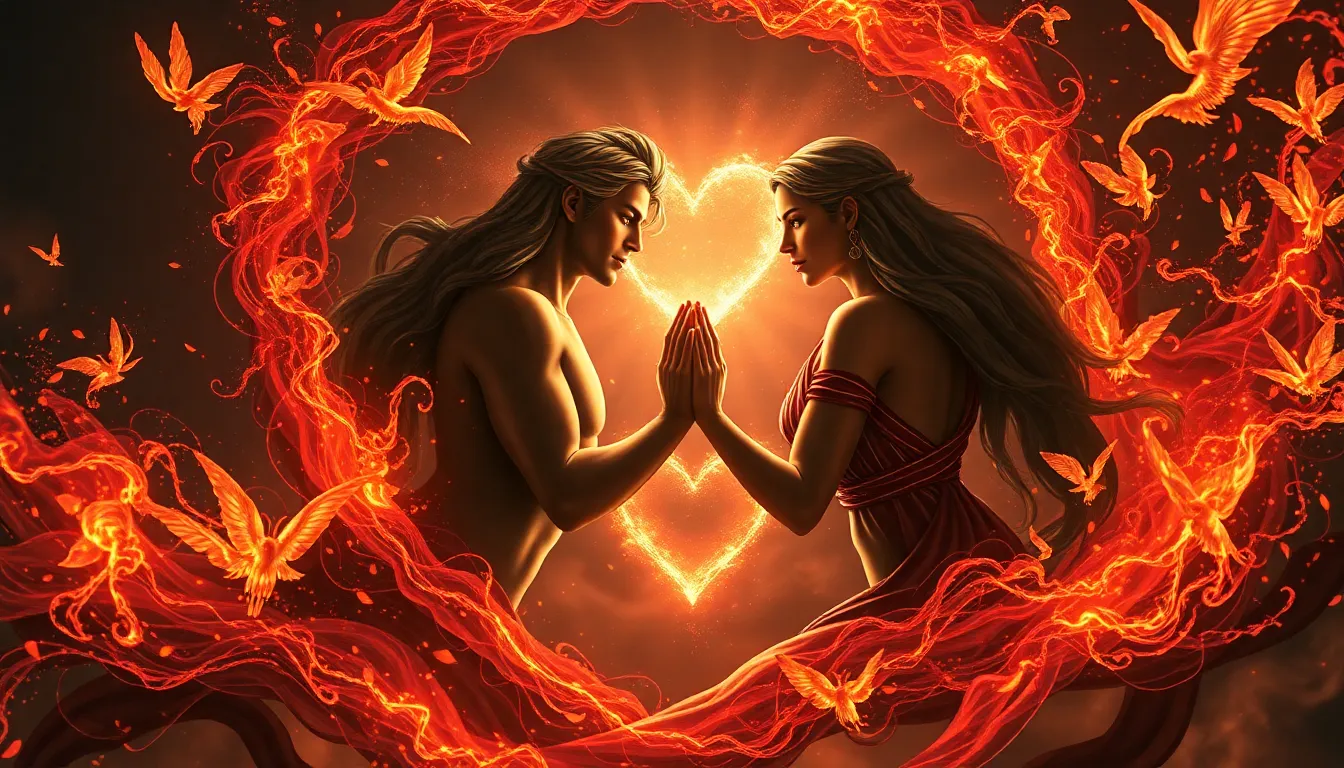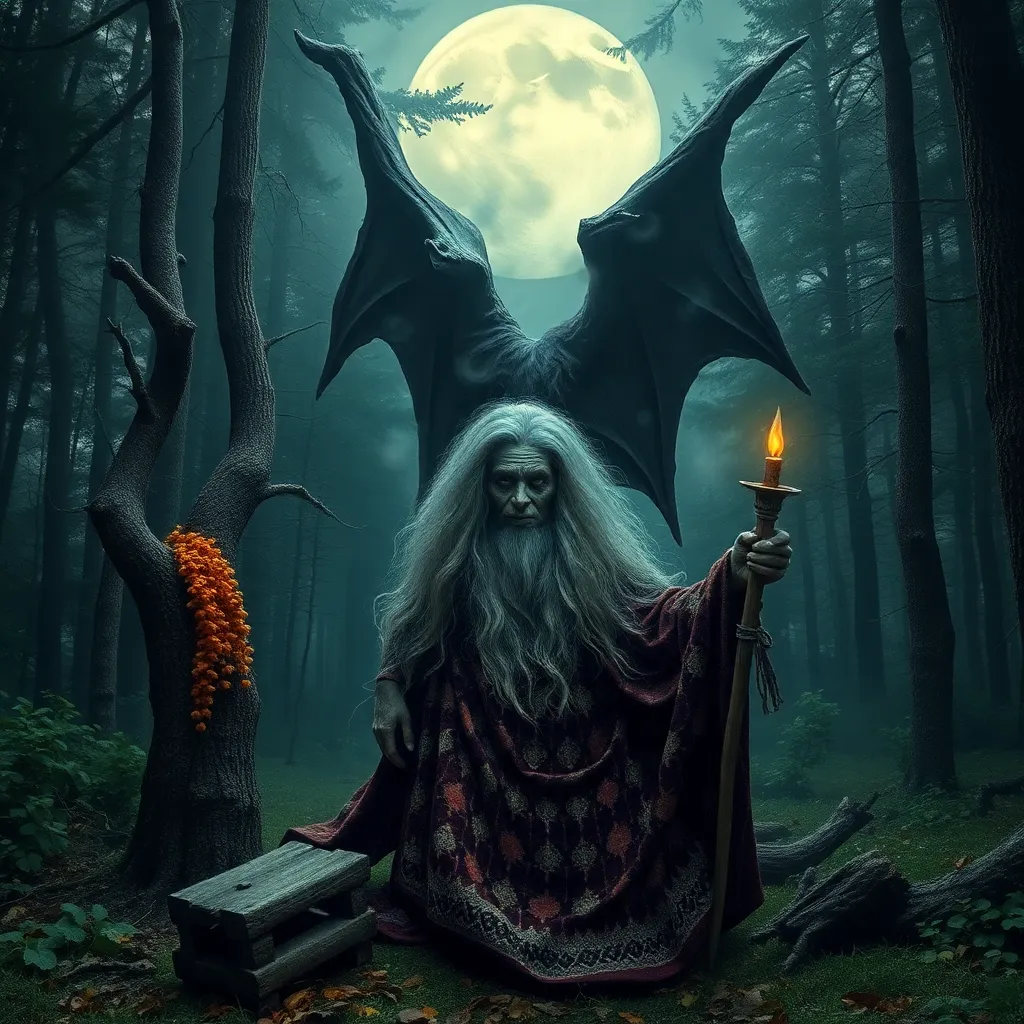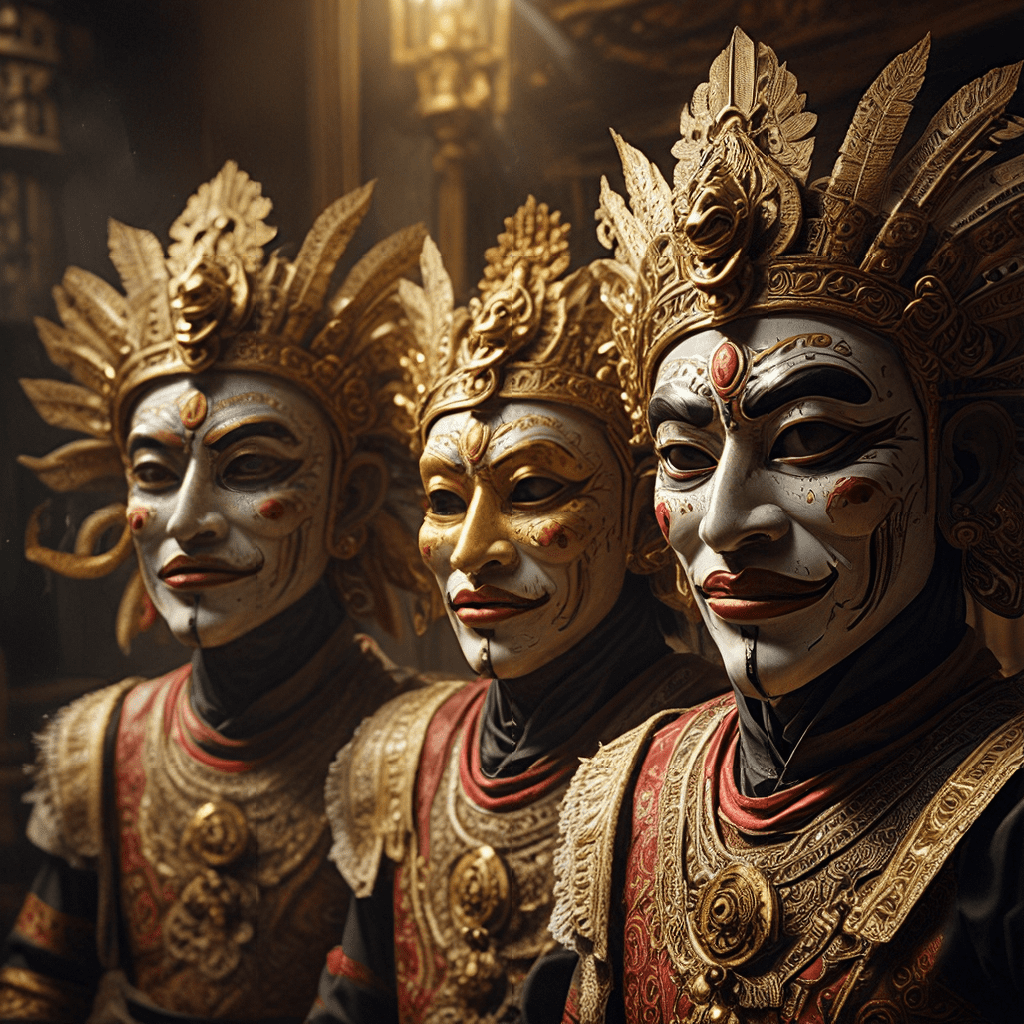Introduction: Exploring the Realm of Persian Myth
Mythology, a captivating tapestry of stories and legends, has played a pivotal role in shaping human culture and beliefs. From ancient Greece to the vibrant lands of Persia, myths have served as a window into the collective imagination of civilizations, reflecting their values, fears, and aspirations. Among the rich tapestry of world mythologies, Persian mythology stands out with its unique blend of captivating creatures, epic tales, and profound moral lessons.
Embarking on a journey through the enigmatic realm of Persian mythology is akin to stepping into a world of wonder and imagination. Here, mythical creatures soar through the skies, mythical kings battle monstrous adversaries, and benevolent spirits guide the destinies of heroes. From the majestic Simurgh, a symbol of wisdom and guidance, to the fearsome Zahhak, a tyrannical serpent-king, Persian mythology is a treasure trove of unforgettable characters and captivating narratives.
This exploration delves into the depths of Persian mythology, unveiling the secrets of its enigmatic creatures and the profound lessons they embody. From the alluring Divs to the wise Shahmaran, each creature plays a distinct role in shaping the rich tapestry of Persian mythology. Prepare to be captivated by tales of courage, transformation, and the enduring legacy of Persian mythology.
The Simurgh: A Majestic Avian Deity
Towering above the realm of Persian mythology is the Simurgh, a majestic avian deity revered for its wisdom, benevolence, and transformative power. This mythical creature, often depicted as a colossal bird with a gleaming golden plumage, holds a prominent place in Persian literature and folklore. The Simurgh's origins can be traced back to ancient Zoroastrianism, where it was associated with the yazata, or divine beings, who embodied benevolent forces in the universe.
The Simurgh is not merely a mythical creature; it serves as a potent symbol of guidance, protection, and spiritual enlightenment. In the epic poem "Shahnameh," the Simurgh plays a pivotal role in the upbringing of the legendary hero Zal, who was abandoned as an infant due to his unusual white hair. The Simurgh takes Zal under its wing, protecting him from harm and nurturing his growth. This act of compassion and guidance underscores the Simurgh's role as a benevolent protector and a source of wisdom.
Beyond its protective nature, the Simurgh is also associated with transformation and renewal. In the "Conference of the Birds," a Sufi allegory, the Simurgh represents the ultimate goal of spiritual enlightenment, attainable only through a arduous journey of self-discovery and surrender. The Simurgh's transformative power is further emphasized in the myth of Rostam, a legendary hero who is granted immortality by bathing in the Simurgh's feathers.
Through its symbolic significance and captivating tales, the Simurgh remains an enduring icon of Persian mythology, inspiring awe and wonder for generations. Its image adorns countless works of art, literature, and architecture, serving as a reminder of the transformative power of wisdom, guidance, and spiritual enlightenment.
The Zahhak: A Tyrannical Serpent-King
In stark contrast to the benevolent Simurgh stands the Zahhak, a tyrannical serpent-king who embodies the forces of evil and oppression. This monstrous figure, depicted with two serpents growing from his shoulders, represents the destructive consequences of greed, envy, and unchecked ambition. The Zahhak's reign of terror is a cautionary tale, warning against the dangers of succumbing to darkness and embracing cruelty.
The Zahhak's origins are shrouded in legend. According to the "Shahnameh," he was a handsome young man who was tricked by Ahriman, the embodiment of evil, into kissing his shoulders. From these kisses, two serpents emerged, feeding on human brains and causing Zahhak to descend into madness and tyranny. His reign was marked by bloodshed, famine, and oppression, as he demanded the sacrifice of two youths every day to satiate his serpents' insatiable hunger.
The Zahhak's tyranny eventually came to an end at the hands of the blacksmith Kaveh, who rallied the people against the serpent-king. Kaveh's revolt symbolizes the triumph of good over evil and the resilience of the human spirit in the face of oppression. The Zahhak's story serves as a powerful reminder of the devastating consequences of unchecked ambition and the importance of resisting tyranny in all its forms.
The Div: Bewitching Female Spirits
The realm of Persian mythology is also home to the Divs, alluring female spirits who possess both captivating beauty and a mischievous nature. These enigmatic figures, often depicted as ethereal beings with long, flowing hair and mesmerizing eyes, inhabit a realm between the human world and the supernatural. Their presence in Persian mythology is multifaceted, embodying both seductive charm and a potential for trickery and deception.
The Divs are often portrayed as guardians of natural places, such as mountains, forests, and springs. They are associated with both beauty and danger, capable of granting wishes to those who respect them but also leading unsuspecting travelers astray. Their association with nature highlights the balance between wonder and peril that exists in the natural world.
In Persian literature, the Divs play a significant role in shaping the narratives of heroes and adventures. They may appear as obstacles to be overcome, testing the courage and resourcefulness of protagonists. Alternatively, they may offer guidance and assistance, providing heroes with the knowledge or tools they need to succeed in their quests.
The Divs' duality embodies the complex nature of human desire and the allure of the unknown. Their presence in Persian mythology adds an element of mystery and intrigue to the stories, reminding us that the world is filled with both beauty and potential danger.
The Pari: Benevolent Fairies of Nature
In contrast to the alluring but potentially mischievous Divs, Persian mythology also features the Pari, benevolent fairies associated with nature and kindness. These ethereal beings, often depicted as young women of extraordinary beauty and grace, possess magical abilities and a deep connection to the natural world. Their presence brings harmony, healing, and prosperity to the lands they inhabit.
The Pari are often portrayed as guardians of forests, rivers, and springs, ensuring the balance and well-being of the natural world. They are associated with healing powers, granting wishes to those who approach them with sincerity and respect. Their connection to nature underscores the importance of harmony and balance in the ecosystem.
In Persian literature, the Pari play a vital role in aiding heroes and guiding them on their journeys. They may offer gifts of wisdom, magical assistance, or even shelter and protection. Their benevolent nature contrasts with the potential for trickery and deception associated with the Divs, highlighting the duality of the supernatural realm in Persian mythology.
The Pari's presence in Persian mythology adds an element of wonder and hope to the stories. They remind us that even in a world filled with challenges, there are forces of good and benevolence that work to protect and nurture life.
The Homa: A Bird of Auspiciousness
Amidst the fantastical creatures of Persian mythology, the Homa occupies a unique position as a symbol of auspiciousness, joy, and good fortune. Depicted as a magnificent bird with plumage of brilliant crimson and gold, the Homa is associated with royalty, victory, and prosperity. Its appearance is considered an omen of good luck and a harbinger of positive events.
The Homa's origins can be traced back to ancient Iranian mythology, where it was revered as a divine bird associated with the yazata Verethragna, the embodiment of victory and courage. In the "Shahnameh," the Homa features prominently as a symbol of royalty and divine favor. Its image adorns the crowns of legendary kings and warriors, signifying their divine mandate to rule and their unwavering commitment to justice.
Beyond its association with royalty, the Homa also carries profound symbolic meaning related to joy and renewal. Its vibrant plumage evokes the warmth and radiance of the sun, bringing light and hope to those who behold it. In Persian literature, the Homa's appearance often coincides with significant moments of joy and celebration, marking the arrival of prosperity and a renewal of hope.
The Homa's auspicious nature extends to its role as a guardian of truth and righteousness. In Zoroastrianism, the Homa is believed to protect the righteous from evil forces and to guide them towards the path of truth. Its presence symbolizes the triumph of light over darkness and the ultimate victory of good over evil.
Through its radiant beauty, auspicious presence, and association with royalty and divine favor, the Homa remains an enduring symbol of hope, joy, and renewal in Persian mythology. Its legacy continues to inspire artists, poets, and storytellers to this day, reminding us of the transformative power of hope and the unwavering pursuit of truth and righteousness.
The Shahmaran: A Wise and Feared Serpent-Woman
In the heart of Persian mythology lies the Shahmaran, a creature of captivating beauty and formidable power. This mythical being, depicted as a woman with a serpent's tail, embodies the duality of wisdom and danger, inspiring both respect and awe. The Shahmaran's enigmatic presence adds a layer of complexity to the realm of Persian mythology, reminding us of the delicate balance between knowledge and its potential consequences.
The Shahmaran's origins are as fascinating as its appearance. According to legend, she was the daughter of a king and a jinn, inheriting the wisdom and knowledge of her jinn ancestry. She resided in a subterranean realm with a colony of serpents, sharing her wisdom and guidance with them. The Shahmaran's vast knowledge encompassed the secrets of herbal medicine, prophecies, and the hidden mysteries of the world.
Despite her benevolent nature, the Shahmaran's association with snakes and her mysterious dwelling instilled a sense of awe and even fear among humans. Some tales depict the Shahmaran as a benevolent protector, offering guidance and assistance to those who approached her with respect. However, others warn of the dangers of encountering the Shahmaran, emphasizing the potential consequences of misusing her knowledge or betraying her trust.
The Shahmaran's complex nature serves as a metaphor for the power of knowledge and the responsibility that comes with it. While knowledge can illuminate and empower, it can also be a source of danger if mishandled or used for malicious purposes. The Shahmaran's story reminds us of the importance of respecting both the potential and the limitations of knowledge, seeking wisdom with humility and using it for the betterment of ourselves and the world around us.
The Al: A Monstrous Giant with a Voracious Appetite
In sharp contrast to the wise and enigmatic Shahmaran, Persian mythology also features the Al, a monstrous giant characterized by its insatiable appetite and destructive nature. This colossal being, often depicted with a towering frame and a terrifyingly gaunt appearance, embodies the forces of chaos and unchecked desire. The Al's presence in Persian mythology serves as a cautionary tale against the dangers of greed, excess, and the unchecked pursuit of self-gratification.
The Al's origins are shrouded in obscurity, emerging from the depths of folklore and popular imagination. Its monstrous form reflects the primal fears of hunger, scarcity, and the insatiable desire that can consume and destroy. The Al's voracious appetite knows no bounds, leading it to devour everything in its path, leaving behind a trail of devastation and destruction.
In Persian literature, the Al often appears as an antagonist, posing a threat to heroes and communities alike. Its insatiable hunger drives it to attack villages, plunder resources, and terrorize inhabitants. The Al's presence symbolizes the danger of unchecked desire, the destructive consequences of greed, and the importance of moderation and self-control.
Beyond its literal interpretation as a monstrous being, the Al also serves as an allegory for the darker aspects of human nature. Its insatiable appetite can be seen as a metaphor for greed, ambition, and the relentless pursuit of material possessions that can eclipse our sense of morality and lead to destructive consequences. The Al's story reminds us of the importance of curbing our desires, living within our means, and seeking fulfillment in values that transcend material possessions.
The Simurgh and Zal: A Tale of Courage and Transformation
Among the captivating narratives of Persian mythology, the tale of the Simurgh and Zal stands as a testament to the power of courage, perseverance, and the transformative nature of guidance and mentorship. This epic story, chronicled in the "Shahnameh," weaves together elements of adventure, self-discovery, and the profound bond between a mythical creature and a young hero.
Zal, the protagonist of this tale, was born with an unusual white head of hair, a mark that caused his father, the king Sam, to abandon him out of fear and shame. The infant Zal was rescued and raised by the Simurgh, the majestic bird of wisdom and benevolence. Under the Simurgh's nurturing care, Zal grew into a courageous and resourceful young man, overcoming the challenges posed by his unusual appearance and his father's rejection.
The Simurgh's role in Zal's upbringing extends beyond mere protection and guidance. The mythical bird imparts wisdom, teaches Zal the art of hunting and warfare, and instills in him the values of courage, compassion, and perseverance. The bond between the Simurgh and Zal transcends the boundaries of human-animal relations, representing a profound connection based on love, trust, and mutual respect.
The turning point in Zal's life arrives when his true identity is revealed, and he is reunited with his father. The Simurgh, ever the guiding force, aids Zal in reconciling with his past and claiming his rightful place as the heir to the throne. The final act of their bond unfolds when Zal faces a perilous battle, and the Simurgh comes to his aid, granting him a feather that possesses the power to heal and protect.
The tale of the Simurgh and Zal resonates deeply with readers, offering a timeless message about the importance of embracing one's true self, overcoming adversity, and the transformative power of mentorship and unwavering support. The story reminds us that even in the face of daunting challenges, courage, perseverance, and the guidance of those who believe in us can lead us towards self-discovery, fulfillment, and the realization of our full potential.
Conclusion: Persian Mythology's Enduring Legacy
The realm of Persian mythology, with its captivating creatures, epic narratives, and profound moral lessons, continues to captivate and inspire generations. From the wise Simurgh and the benevolent Pari to the monstrous Al and the fearsome Zahhak, each figure in this rich tapestry plays a distinct role in shaping our understanding of human nature, the forces that shape our world, and the timeless values that guide our lives.
The enduring legacy of Persian mythology lies not only in its captivating stories but also in



